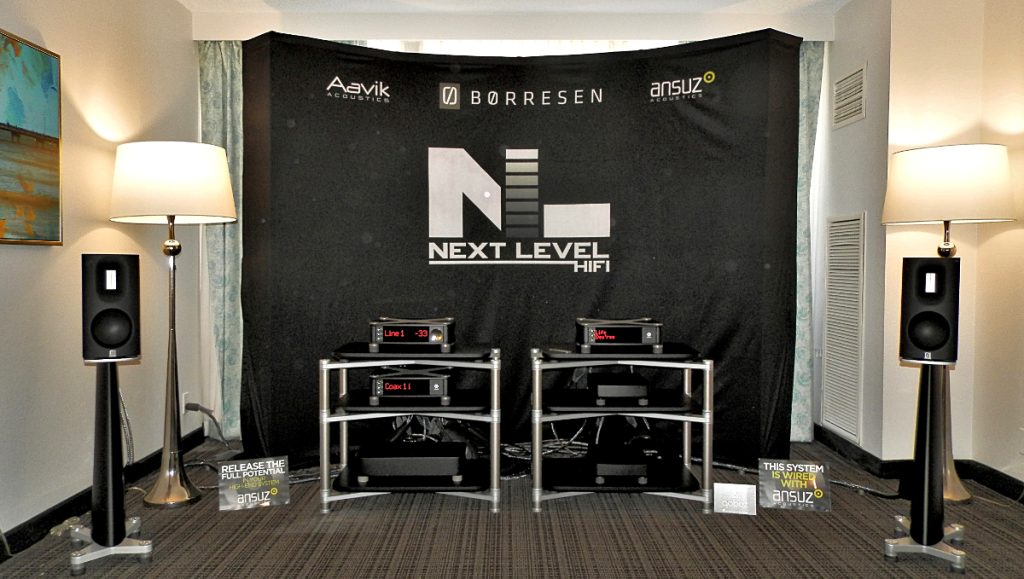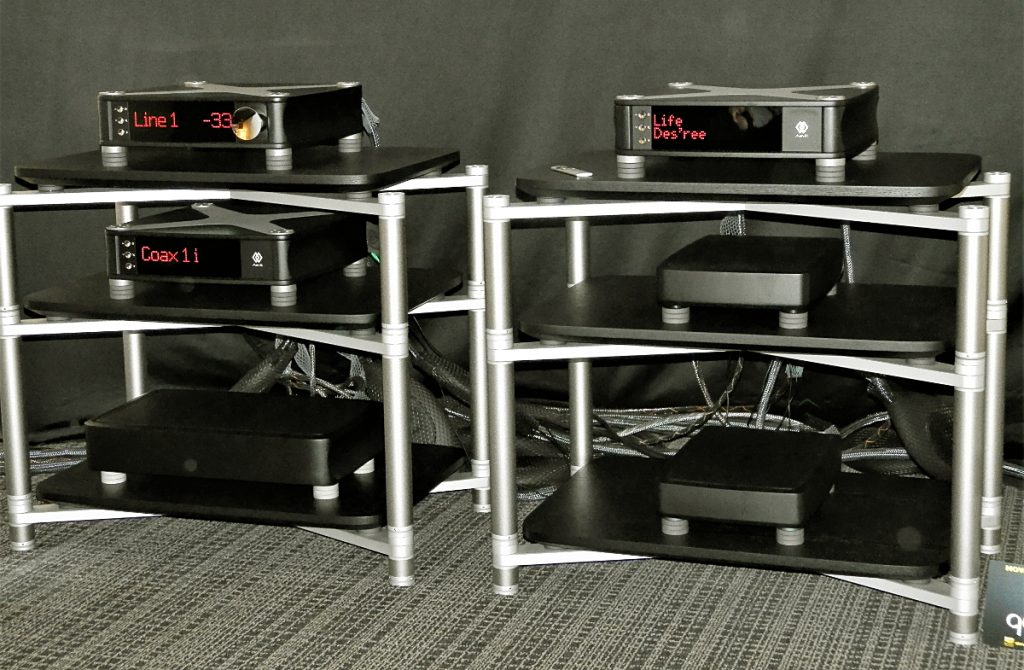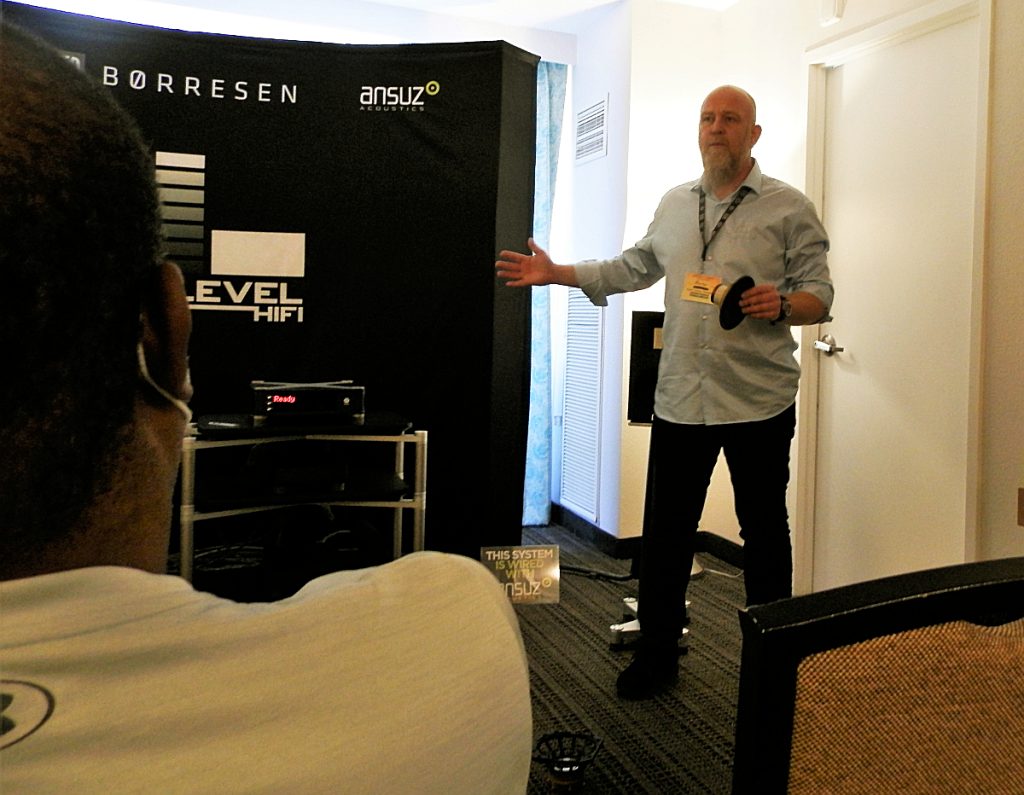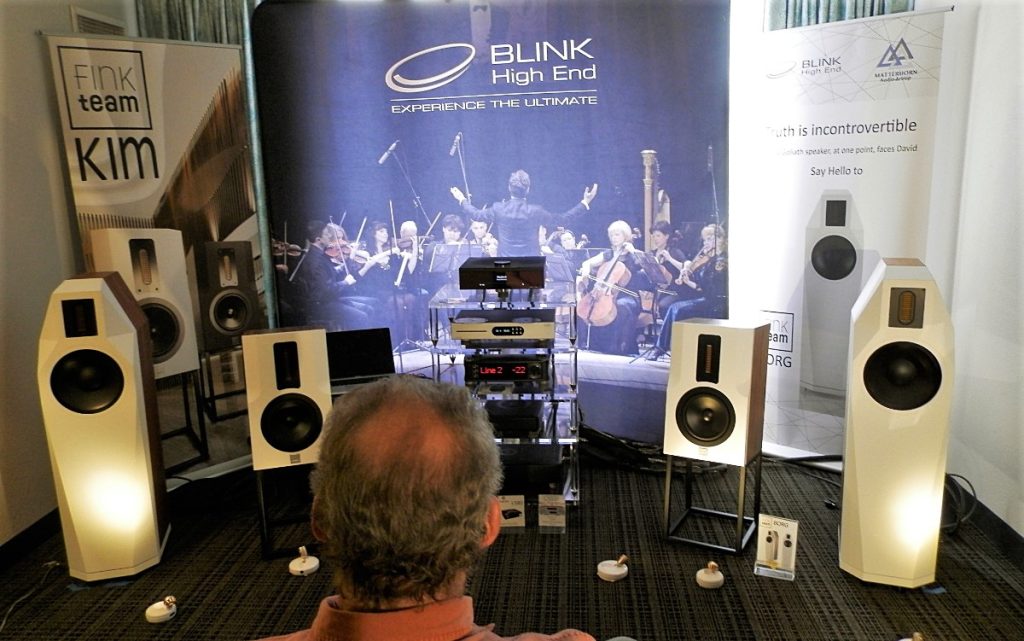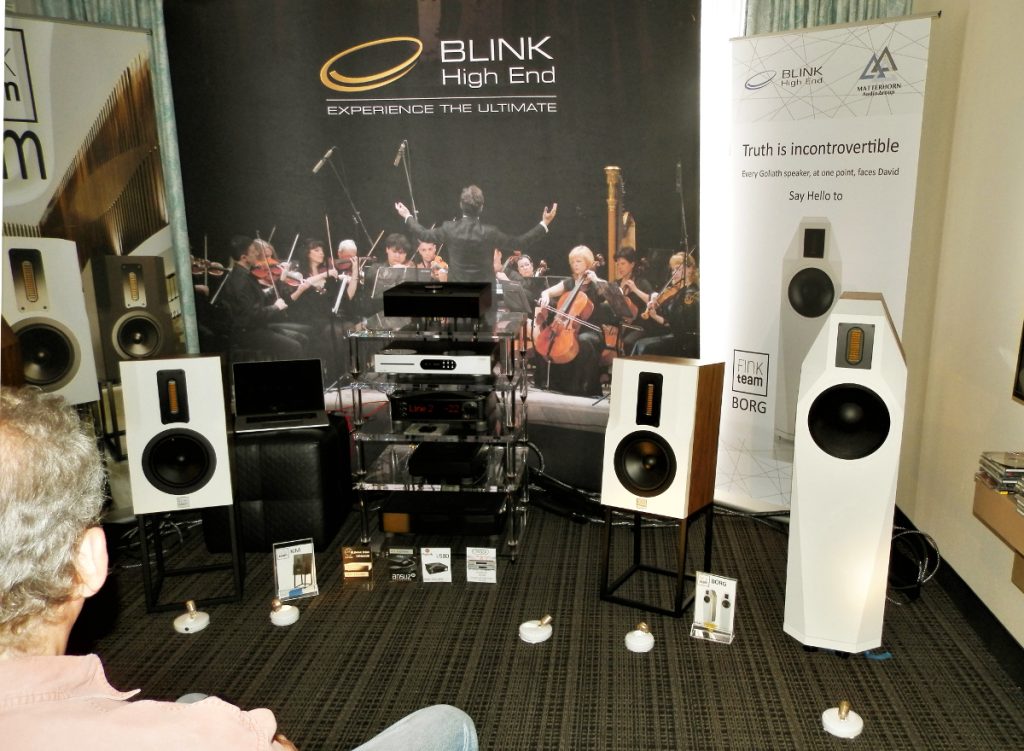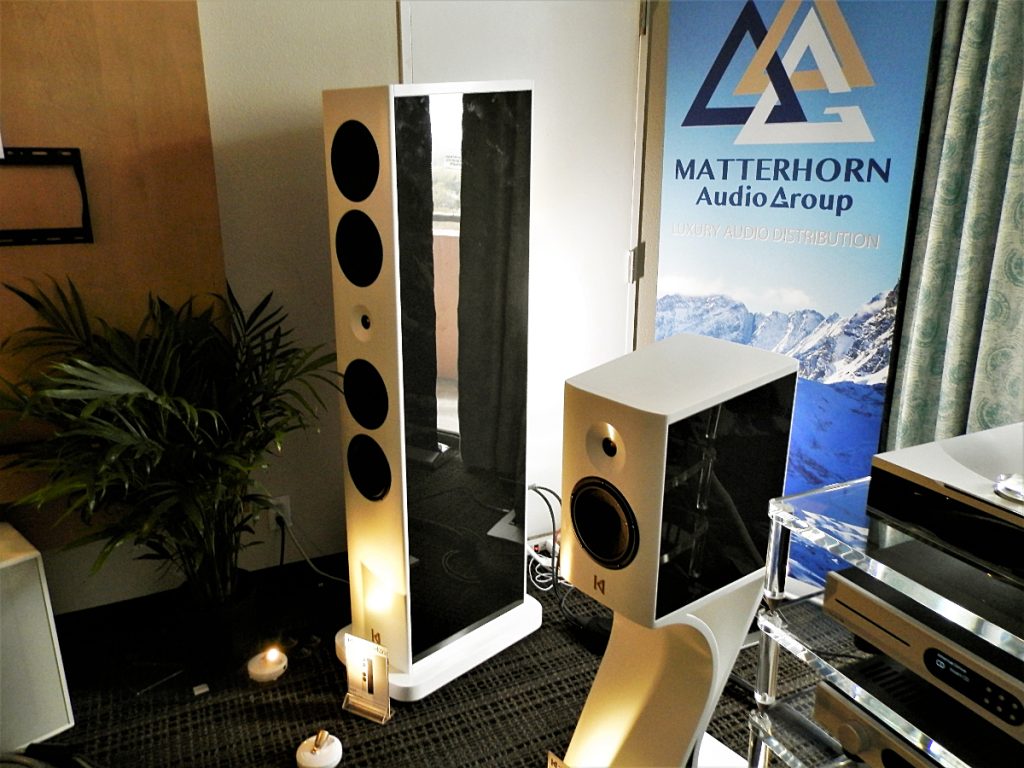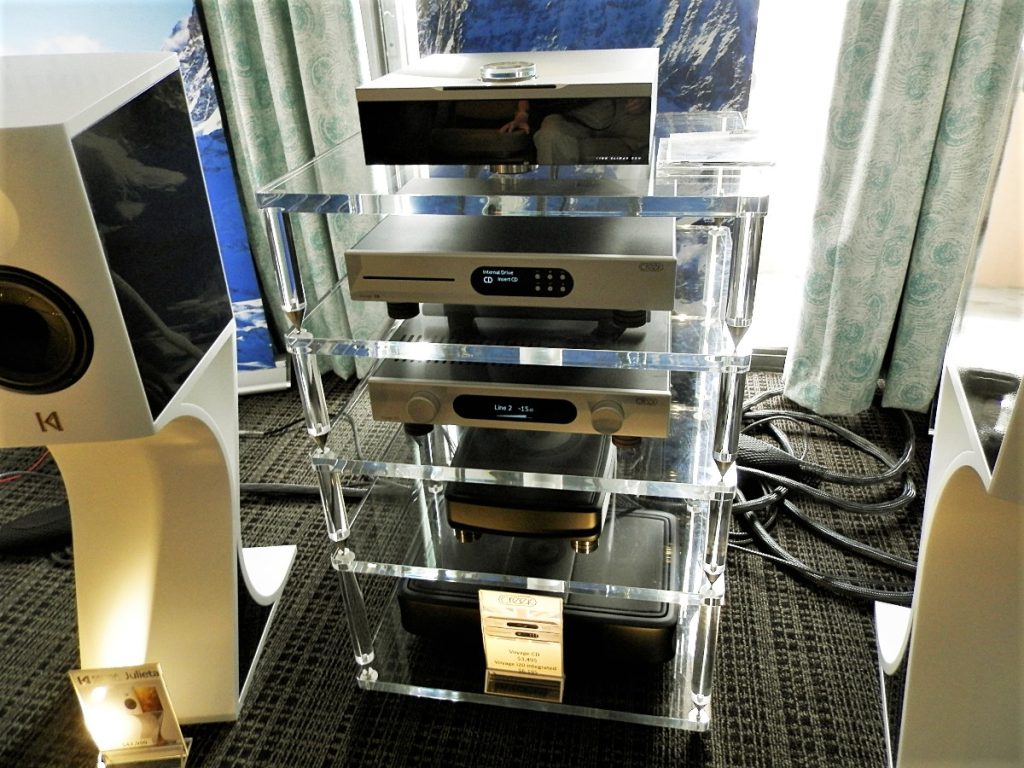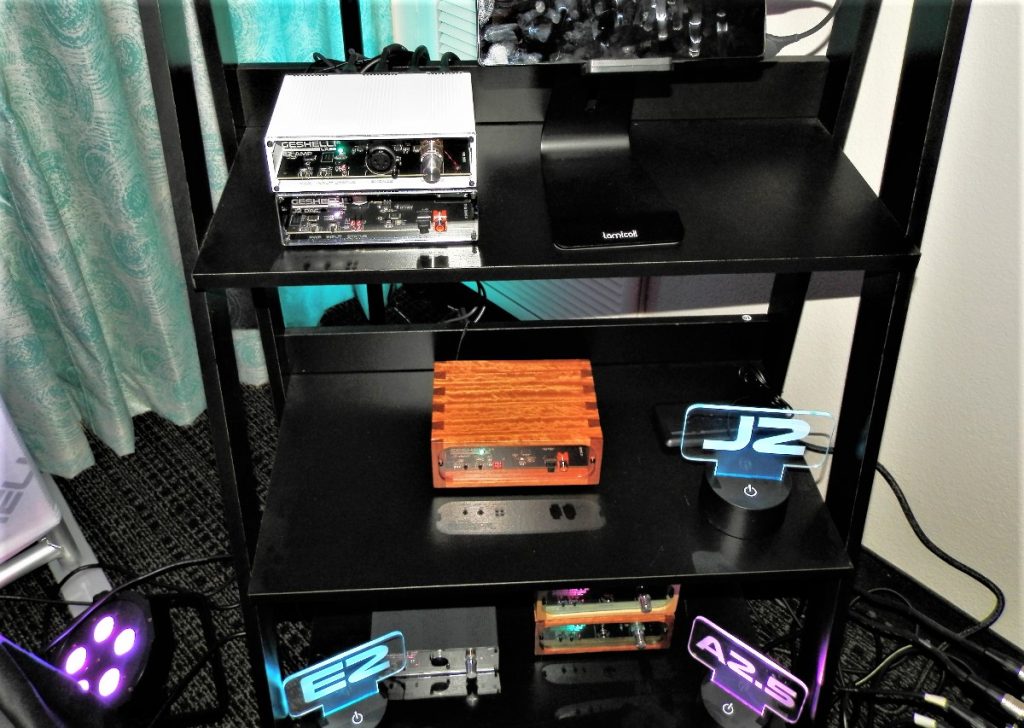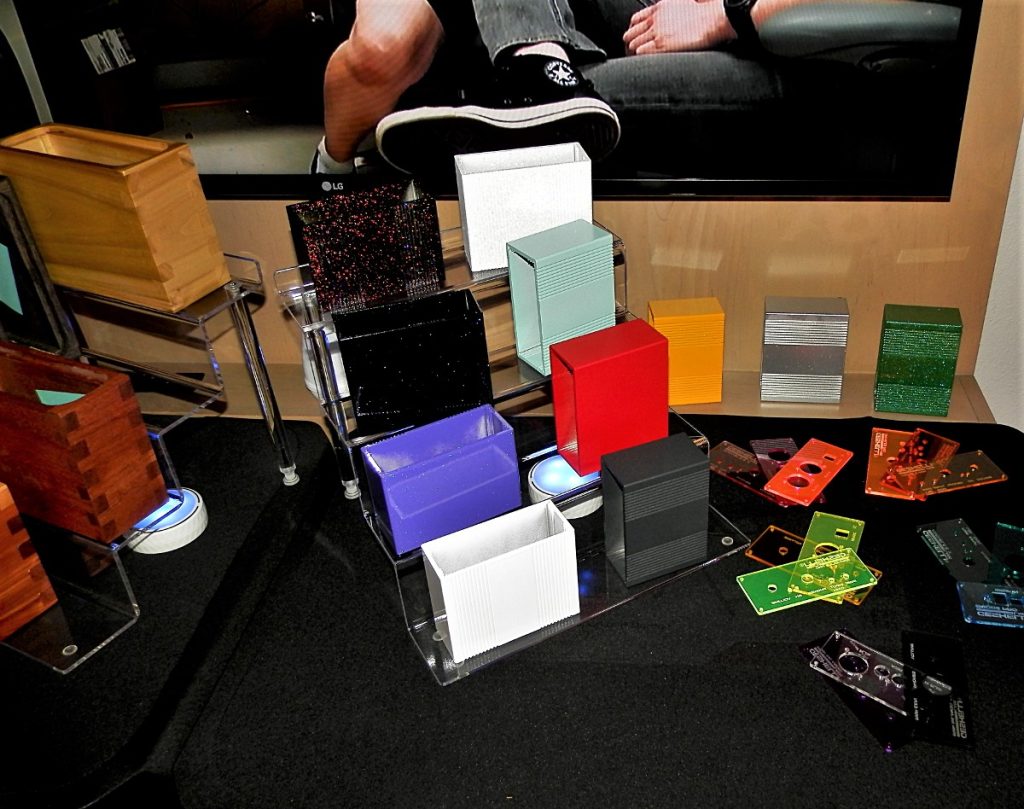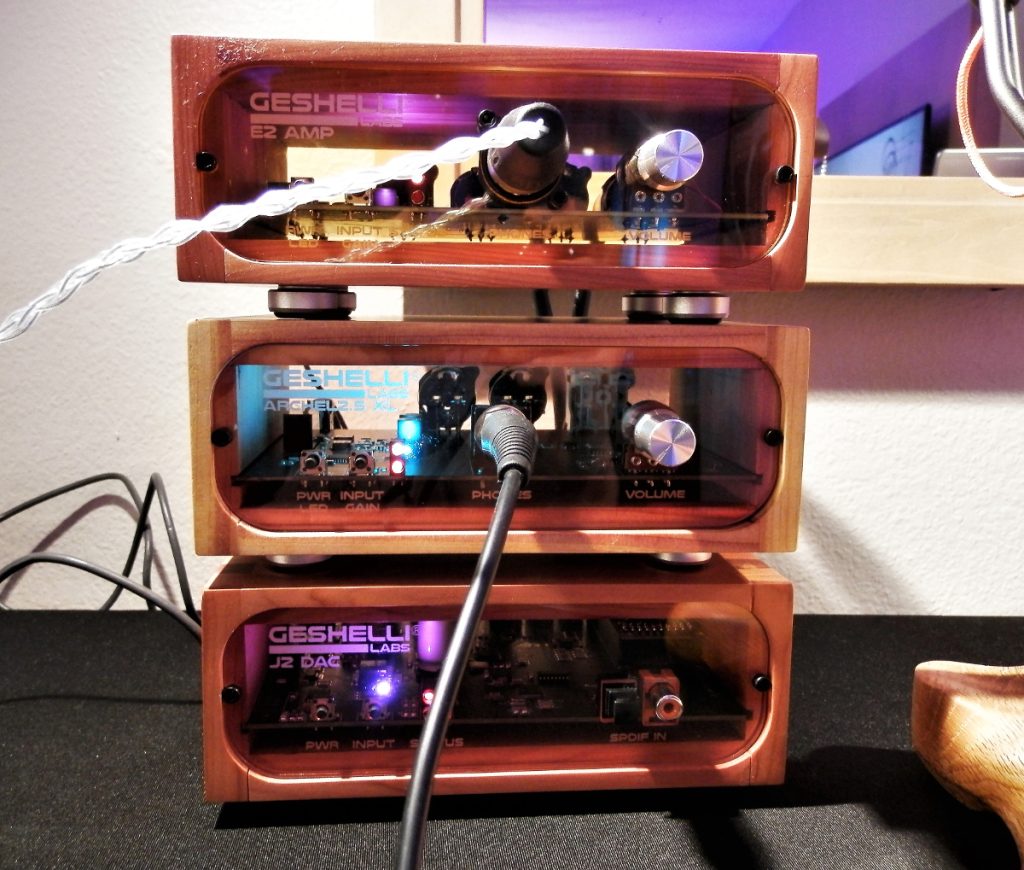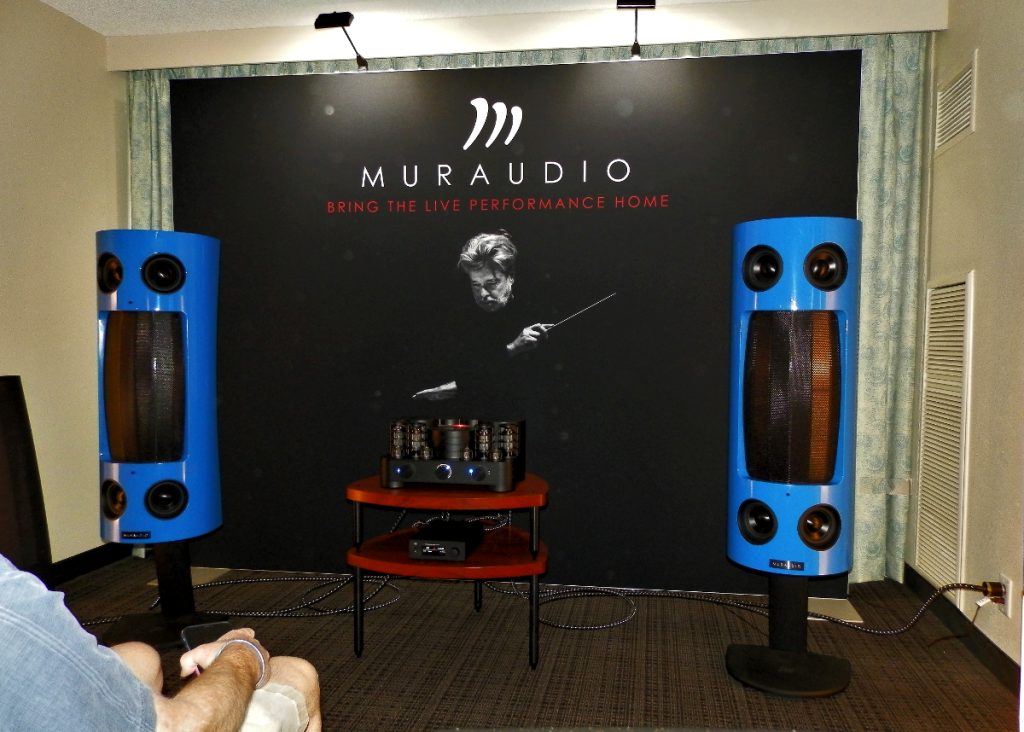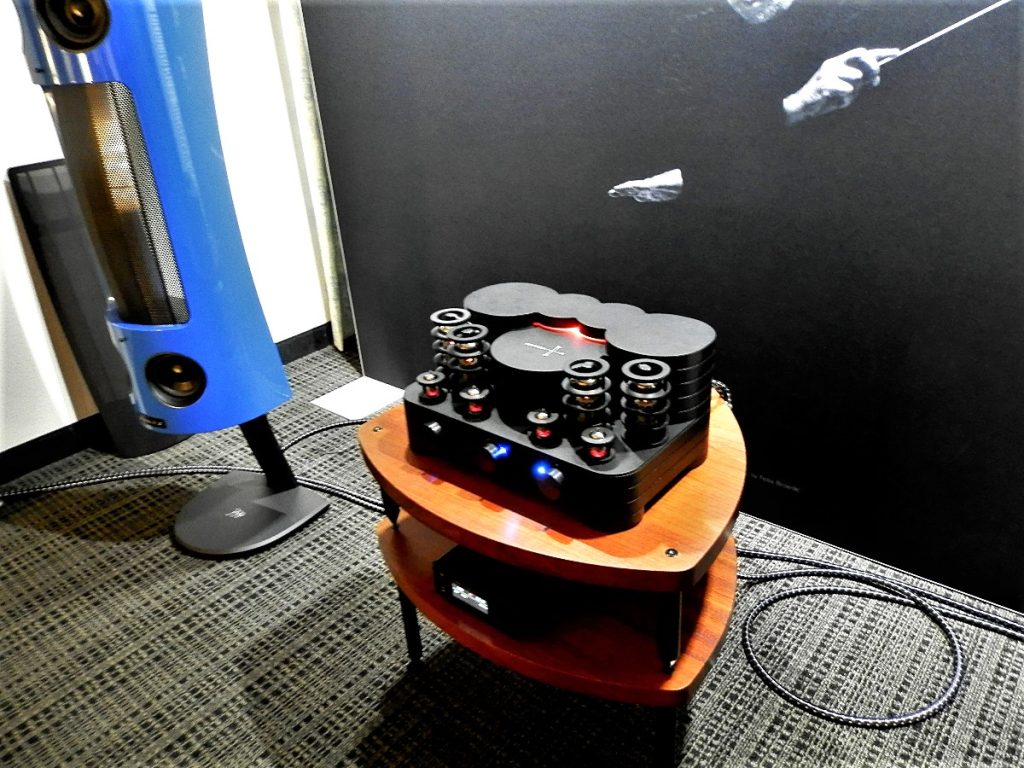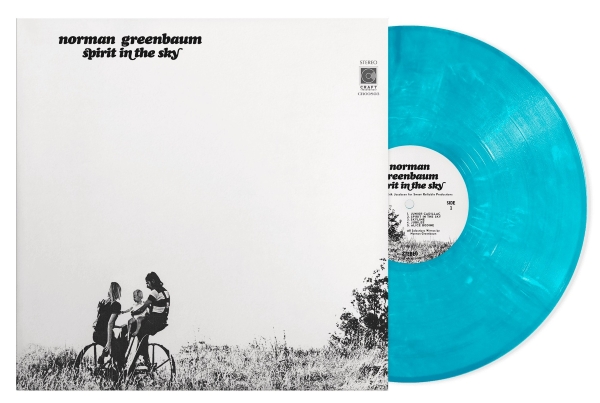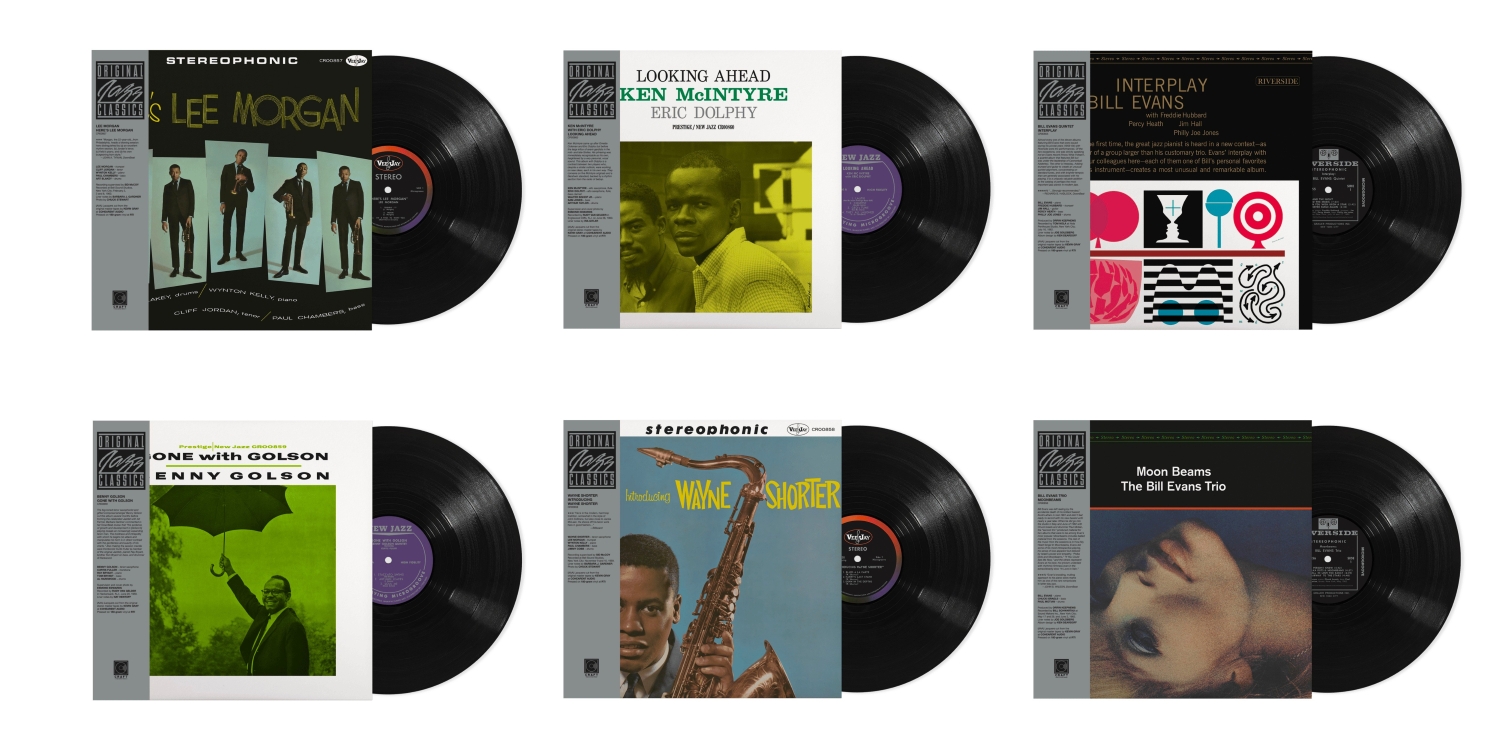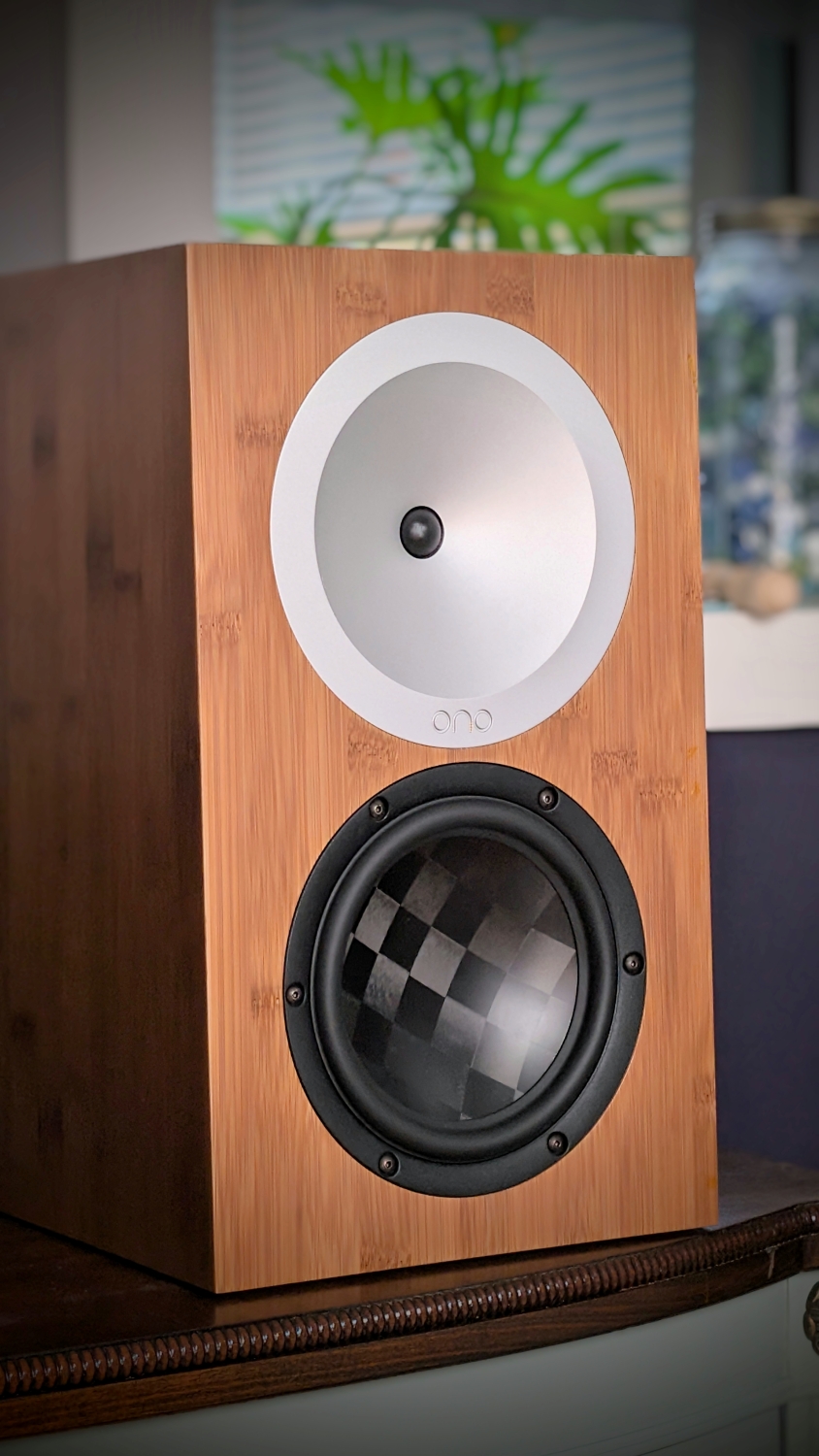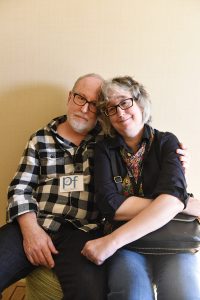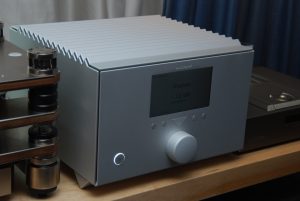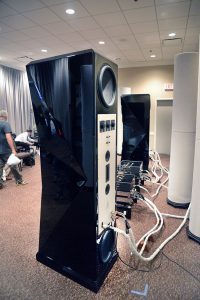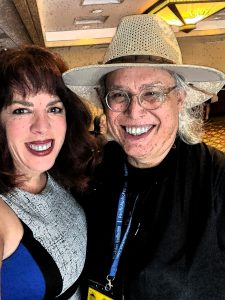Here are more of the rooms that really impressed me at FAE 2022. Even though there were marginally fewer exhibitors than in 2020, I was definitely dragging a bit by the time I finally got home on the Monday following the show. The elevators at the hotel were always overcrowded and somewhat slow, so mid-day on the first day of the show, I decided to start taking the stairs to get from floor to floor. I wear a Fitbit to keep track of my heart rate, track my steps, etc., and in a typical week, I climb about a dozen flights of stairs. On Monday, my weekly report arrived in my inbox, and over the three days of the show, I climbed 67 flights of stairs! No wonder my calves were screaming at me.
Once again, I apologize for the highly variable photo quality—the lighting conditions in the rooms often made getting great photos of the loudspeakers and equipment stacks nearly impossible with a point-and-shoot camera.
Next Level HiFi featuring Borresen Acoustics, Aavik Acoustics, and Ansuz Acoustics
Next Level HiFi is a family-run high-end audio business located in Wayne, Illinois, which is about an hour west of Chicago. Their room at FAE this year featured the three product lines of Audio Group Denmark (AGD), the manufacturer of loudspeakers for the Borresen Acoustics brand, electronics and digital source equipment for the Aavik Acoustics brand, and a variety of high-end cables for the Ansuz Acoustics brand. Interestingly enough, three of the principal distributors in the United States for AGD had rooms at FAE, and all were showing the three AGD brands with various equipment setups. Various representatives from AGD were present at the show, and on the day I walked into the Next Level HiFi room, Morten Thyrrestrup from AGD was making the presentation and fielding all questions.
A variety of electronics from Aavik provided the DAC, digital streaming, amplification, and system control, and all cables were of course from Ansuz. The loudspeakers on display were the Borresen 01 Silvers, which I was very keen to hear again (I first heard them at FAE 2020, and they made quite the impression). Morten Thyrrestrup reminded everyone that all Borresen loudspeakers employ drivers that are iron-free, which greatly lowers their inductance and imparts a greater sense of clarity to the sound. He expounded on how the Silver version improves upon the base model by replacing any copper used in the drivers with pure silver. Of course, that improves upon the already good clarity of the base model significantly, but also essentially doubles the MSRP of the base model 01 to over $60k/pair.
I loved the large displays on the Aavik Acoustics equipment.
Thyrrestrup also talked about Audio Group Denmark's choice of materials across their product range, which include mostly materials that occur naturally in nature, which they feel enhances their audio reproduction exponentially. An example being the cabinets of the Aavik electronics, which are made from wood and wood composites. Morten was very clear that you won't find any loudspeaker or electronics cabinets that are created from CNC machined aluminum blocks, which goes totally against AGD's design philosophy. The construction of the cabinets, in their view, is almost as important to the overall sound quality as the electronics and drivers are. And they're really cool looking—I particularly loved the large-format displays on the amps and digital equipment, which made it super easy to identify what was playing and its source code. And most importantly, the sound was superb.
Morten Thyrrestrup from AGD explains the Danish company's design philosophies to the FAE crowd.
The Borresen 01 Silver is a standmount loudspeaker (the really cool and modernist stands are included in their price) that literally blew me away with its imaging and solid reproduction of the full frequency range. I would have sworn a subwoofer was hidden in the room, and it was no mean feat to coax such a huge sound from such a relatively smallish loudspeaker cabinet. At points the 01 were pushed really hard, and the image never collapsed nor did they show any signs of strain. The standout tune that was playing was "Soft Landing" by the Hadouk Trio, which presents a really hip mish-mash of jazz and world music. The tune features almost subterranean bass and was deeply percussive, but the 01 never broke a sweat—the synergy displayed here was easily among the very best of any system at FAE 2022. I don't often lie awake at night dreaming of $60k loudspeakers, but in a perfect world, this could easily be my dream system.
Matterhorn Audio Group/Blink High End featuring Fink Team, Kroma Audio, Creek Audio, and Linn.
Matterhorn Audio Group and Blink High End are a distributor and dealer partnership based in Cambridge, Massachusetts. Their two rooms were among the several at FAE 2022 that highlighted products from Audio Group Denmark (AGD), including Borresen, Aavik, and Ansuz. Unlike the others, however, they didn't feature Borresen Acoustics loudspeakers in either of their rooms. I first checked out the Blink High End room where they showcased a pair of excellent models from Germany's Fink Team, who've recently been getting a lot of praise in audio circles. Including the floorstanding Borg loudspeakers, with an MSRP of $33.5k/pair and the smaller standmount Kims that retail for $12k/pair. The complement of electronics in the room included amplification, system control, and digital from Aavik Acoustics, Linn, Illusonic, and Creek Audio. Cables chosen for the system included models from HiDiamond and Ansuz Acoustics.
The Fink Team Borg and Kim loudspeakers were front and center in the Blink High End room.
The Fink Team Borgs were playing as I entered the room, and Veronica Diaz was talking about the driver complement—which is a two-way design that includes a Mundorf AMT mid/hi frequency driver and a 10.25" high power, long-excursion woofer. The Borg speaker cabinets were strikingly finished in a combination of satin-white faces with real wood-veneered sides, and their shape struck me as looking a lot like an Egyptian sarcophagus (but in a cool way!). One of the Blink representatives started speaking about the Borgs, and I suddenly realized that I recognized that very distinctive voice—it was Mike Burns (local to me in Atlanta, Georgia) of Wolfsong Audio, who sells Fink Team loudspeakers and also reps for Blink and Matterhorn. I found the sound of the Borgs to be gripping and powerful, and I loved the clarity afforded the mids and high-end by the AMT drivers.
The Borgs were soon moved and replaced by the smaller and much more affordable Kims. They've been getting a lot of really positive ink in audiophile publications over the last year, and I was pretty stoked to hear them at FAE. Unfortunately, I was a bit underwhelmed by the Kims, especially in comparison to the Borgs, but it could very possibly have been due to poor room acoustics, positioning, or poor synergy with the room's equipment. You still got a generous portion of the Borg loudspeaker's goodness, though the scale of sound wasn't as believable as the Borgs, and the bass was somewhat lacking. I definitely intend to head over to Wolfsong Audio to take another listen under more ideal conditions.
The Kroma Audio loudspeakers were quite visually impressive.
Across the hall, the Matterhorn Audio Group's room featured a pair of loudspeakers from Kroma Audio and a broader selection of Creek Audio electronics, including the Voyage i20 integrated amplifier ($6.2k) and the Voyage CD player ($3.5k). Digital streaming was provided by the Linn Klimax server and Organic DAC combo ($39k). The room also featured the Illusonic IAP (Illusonic Audio Processor, $12k), which Matterhorn describes as a "Swiss Army knife" for audiophiles. I didn't get the opportunity to check out the IAP as closely as I'd have liked, but it seems to offer a very wide range of customizable system integration solutions for many audiophile system needs.
Matterhorn Audio Group's room featured a selection of Creek Audio and Linn gear to power the Kroma loudspeakers.
The Kroma loudspeakers are manufactured in the Andalusia region of Spain, featuring construction using a mineral-based substance called Krion that's very similar to the materials used in solid-surface countertops. Kroma touts their Krion cabinets to have superior acoustic properties when compared to traditional cabinets made from mostly wood and wood products. Certain elements of the Kroma loudspeaker designs, however, do employ luthier-quality woods, which the Matterhorn representative said were chosen for their excellent acoustic properties. And the construction of the Kroma loudspeakers involved virtually zero materials with magnetic properties. The two loudspeakers on display were a floorstanding model, the flagship Elektras ($120k/pair), and the visually striking Julietas ($43k/pair), a standmount. I didn't hang around long enough to hear the Julietas, but the Elektras were impressively dynamic!
Geshelli Labs
Upon arrival at FAE on Thursday, I checked into my room on the ninth floor and immediately noticed that one of the exhibitors, Geshelli Labs, was located directly across the hall. Unfamiliar with the company name, I only hoped they wouldn't be cranking out the jam at all hours of the night! I then went downstairs to the evening social, and was sitting drinking a beer, still wearing the Pink Floyd t-shirt I'd worn on the drive down to Tampa from Atlanta. When this guy walks by, looks straight at me and proclaims "Nice shirt, dude!" I sat and enjoyed the jazz band a bit longer, finished my drink, and headed back upstairs for the evening. The following morning, I opened my door to head downstairs, and low and behold, the "Nice shirt" guy was standing in the room directly across the hall. It was Geno Bisceglia, he and his wife Sherri form the core of Geshelli Labs, which is a family-run business; everyone in the Bisceglia family contributes in one way or another to the success of the Geshelli brand. Geno's dad does all the woodworking (beautiful dovetail joints on the wooden cases) and Sherri does the powder coating of all the metal cases.
The Geshelli gear is available in a wide variety of wood, metal, and color choices.
I strolled into the room to have a look around, and was frankly blown away by the quality of the wood and metal work, and the shocking variety of color choices available across a highly-customizable line that basically includes a DAC and several headphone amps. All the wood and metal cases have translucent glass front panels that are available in a multitude of color choices, and the illumination of the interior circuitry gives all the equipment a funky, rock-and-roll glow. And that perfectly matches the Geshelli aesthetic: it's all about the rock-and-roll. There were listening stations scattered around the room with a variety of high-end cans available to check out. And although predominantly headphone-centric, the room also featured a really nice pair of powered Yamaha monitors that would allow you to hear the streamed music of your choice via the Geshelli amp or DAC of your choice. And there was nothing in the room that had an MSRP greater than $300. And everything is hand-built in the USA, in Rockledge, Florida, which is on the east coast just south of Cocoa Beach. At audio shows like this, where you've seen it all, and generally many times over, what a breath of fresh air it was to encounter a room like this.
The glass front panels of the Geshelli components gave them a really unique look.
I took some pictures, and wished them well, and as I walked away, I almost felt badly for them, because the ninth floor was one of the most sparsely populated in the entire show. And at a show where there was still some uncertainty about attendance turnout, I feared that they'd have very little traffic in what seemed to be a very deserving room. Wrong, wrong, wrong! As the weekend progressed, and as I went back and forth to my room throughout the three days of the show, the crowds literally poured into the Geshelli room—it was almost impossible to get in, there were typically so many people there. On Saturday evening, as the show was winding down at 6 pm, the Bisceglias had basically closed their door for the day, when another crowd showed up and stayed for the next hour. Nice job, guys, and I intend to reach out to them in the coming weeks for review samples of their equipment.
Muraudio featuring Westend Audio, Boaacoustic, and Weiss.
Muraudio was again at FAE; I'd seen and heard their excellent SP1 electrostatics at FAE 2020, and was totally entranced by these remarkable loudspeakers. This year was no different; the SP1 Point Source electrostatics cast a seductive stereo image, have exceptional dispersion qualities, and literally disappear in the soundfield. They're one of the most exotic looking electrostatic loudspeakers ever, and their relatively low $20k/pair MSRP makes them a rare bargain in the high end. Muraudio's room featured tube amplification from Germany's Westend Audio Systems, the 70 wpc (8 ohms) Monaco integrated amplifier ($26k), as well as digital streaming from the Weiss Engineering DAC501 ($10k). Which combines DAC and network renderer in a single chassis; all cables in the system were from the Boaacoustic Evolution Black Series.
I arrived at the Muraudio room about 15 minutes before the show opened on Sunday and found both Murray Harman and Roland Schebor available for a demonstration. We were able to talk and listen leisurely to the SP1s for about an hour, and Harman discussed Muraudio's goals for the future. Which literally revolves around getting their outstanding electrostatics into more homes in settings where they'll be heard by everyone, and not just locked away in a basement room enjoyed by a single-minded audiophile. That's one of the reasons they've worked so hard to get such a wide dispersion pattern with the SP1's, to increase the size of the "sweet spot" for more listeners to easily enjoy the music. I expressed to them that I'd already had my own "Come to Jesus" moment with regard to making the stereo and the music easily available to everyone in my home.
The Westend Monaco amplifier and Weiss 501 DAC were essential to the great sound of the SP1.
At 86 dB/watt (8 ohms), the SP1's would appear to be somewhat inefficient. However, that's not entirely the case: the solid-state 100 wpc Sim Audio Moon 340i that Muraudio used at 2020's FAE powered the SP1's to perfection. At 70 wpc into 8 ohms, the Westend Audio Monaco integrated was marginally close to underpowering them, and Murray told me that he didn't really want to push the SP1's too hard or push the Monaco amp into clipping. That said, the sound was absolutely, liquidly glorious with everything we listened to, and I had zero complaints about the system's synergy as presented. The pair displayed at FAE 2022 had a beautiful sapphire blue gloss finish that was visually quite striking, and a number of natural wood and solid color finishes are available to suit any preference. The SP1's do an excellent job of reproducing most of the audible frequency range; they're essentially flat from 35Hz-20kHz, and provide bass transients with impressive slam and impact. Throughout my time in the Muraudio room, had I not known otherwise, I'd have definitely guessed that a subwoofer was present to augment the low bass. But I would have been wrong—Murray Harman's trickery with the four small mid-bass drivers in each SP1 cabinet creates a level of bass that's satisfyingly deep and integrates particularly well with the curved electrostatic element. Yielding a convincing aural impression of reality—the SP1's are a must hear.
Still more to come.
All photographs courtesy of the author.




